“I would say that our patients never really despair because of any suffering in itself! Instead, their despair stems in each instance from a doubt as to whether suffering is meaningful. Man is ready and willing to shoulder any suffering as soon and as long as he can see a meaning in it.” …”What gives light, must endure burning.”
- Viktor Frankl

"William Blake The Ghost of a Flea circa 1819-20 Tempera heightened with gold on mahogany, 214 x 162 mm Bequeathed by W. Graham Robertson 1949"-Tate
The most pernicious form of evil today , may be madness, mental illness, or psychopathology: It is evil in this guise, and in its most radical manifestation–destructive violence–that has now become the target of such intense psychological scrutiny and treatment. With escalating urgency, contemporary culture calls upon the psychologist and psychiatrist to do battle with this evil: to explain, control, or “cure” bedeviled individuals who tend to be homicidal, suicidal, sexually perverted, assaultive, abusive, addicted, anorexic, alcoholic, or otherwise violently destructive to themselves and/ or others; that is, the suffering, not the sufferers appears to be the true reality of evil today. It began as a great theme in art beginning in the young Romantic Age which seemed to have a penchant for madness; hence all the mad scenes that marked its artists’ revolt against reason. …
“Then, and then only, can we determine the realm in which the man of madness and the man of reason, moving apart, are not yet disjunct; and in an incipient and very crude language, antedating that of science, begin the dia-logue of their breach, testifying in a
fugitive way that they still speak to each other. Here madness and non-madness, reason and non-reason are inextricably involved: insepa-rable at the moment when they do not yet exist, and exist-ing for each other, in relation to each other, in the exchange which
separates them. In the serene world of mental illness, modem man no longer communicates with the madman: on one hand, the man of reason delegates the physician to madness, thereby authorizing a relation only through the abstract universal-ity of disease; on the other, the man of madness communi-cates with society only by the intermediary of an equally abstract reason which is order, physical and moral con-straint, the anonymous pressure of the group, the require-ments of conformity….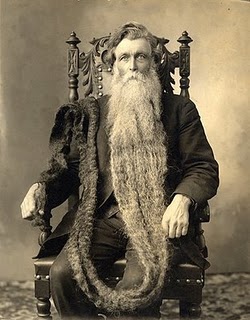
As for a common language, there is no such thing; or rather, there is no such thing any longer; the constitution of madness as a mental illness, at the end of the eighteenth century, affords the evidence of a broken dialogue, posits the separation as already effected, and thrusts into oblivion all those stammered, imperfect words without fixed syntax in which the exchange between mad-ness and reason was made. The language of psychiatry,(x) which is a monologue of reason about madness, has been established only on the basis of such a silence. I have not tried to write the history of that language, but rather the archaeology of that silence. ( Michel Foucault, Madness and Civilization )

Moby Dick. "In each instance the obvious effort paid off. Mr. Scheer’s libretto was an economical wonder, casting off Melville’s landlocked opening and stretches of minutiae regarding whales and whaling. What remained was a taut, two-act adventure yarn, bound by the relationships between Ahab and his conscientious first mate, Starbuck, and between the neophyte seaman Greenhorn (Melville’s Ishmael, renamed with dramatic intent) and Queequeg, the noble-savage harpooner. Their actions, and those of a large, nearly all-male Pequod crew, were played out against a multimedia-enriched staging that ranged from striking to near-miraculous. "
As Herman Melville says in “Moby Dick” , “Human madness is often a cunning and most feline thing. When you think it fled, it may have but become transfigured into still subtler form.” When he himself pursues this essence to its roots in totem and taboo, it leads him , as it has the earlier romantics, to that dark and mysterious realm of the subconscious. ”where far beneath the fantastic towers of man’s upper earth, his root of grandeur, his whole awful essence sits in bearded state…” But Melville did not possess the temperament to pull the beard of the king he found there enthroned; that literary feat was reserved for the Englishman Thomas Lovell Beddoes, whose five act black comedy, “Death’s Jest Book” is probably the most bizarre piece of writing during the romantic age.

James Gillray Disciples Catching the Mantle: The Spirit of Darkness Overshadowing the Priests of Baal June 1808 Coloured etching, 398 x 339 mm With permission of the Warden and Scholars of New College, Oxford In an overblown scene of biblical spectacle, the late prime minister William Pitt (1759-1806) is the prophet Elijah, ascending to heaven. As he flings his cloak away, his political followers reach up to catch the garment. On the right, Pitt's opponents are cast as the pagan followers of Baal. The demonic spectre of Pitt's rival, Charles James Fox, spreads out his dark cloak in an effort to protect them.-Tate
Beddoes, who was born in 1803 and committed suicide in 1849, belongs to the great tradition of English eccentrics. He left oxford to go to Germany and Switzerland, where he spent more than twenty
s studying anatomy and dabbling in literature. If Keats was “half in love with easeful death,” Beddoes was wholly in love with it, and “Death’s jest Book” is his obsessional masterpiece: a sprawling, blood-drenched fantasy into which he projected his most sadistic dreams about corpses and ghosts and madness and revenge.
“The only people for me are the mad ones, the ones who are mad to live, mad to talk, mad to be saved, desirous of everything at the same time, the ones who never yawn or say a commonplace thing, but burn, burn, burn, like fabulous yellow roman candles exploding like spiders across the stars and in the middle you see the blue centerlight pop and everybody goes “Awww!” ( Jack Kerouac )
Beddoes style is archaic, modeled on the Elizabethan and Jacobean dramatists, and the action, centered on the revolt of the court fool, takes place at a German court in the Middle Ages. This sense of being twice removed from reality in time and language gives Beddoes’s work a strangely psychotic quality, as though it were taking place in the hermetic asylum of his mind’s eye.
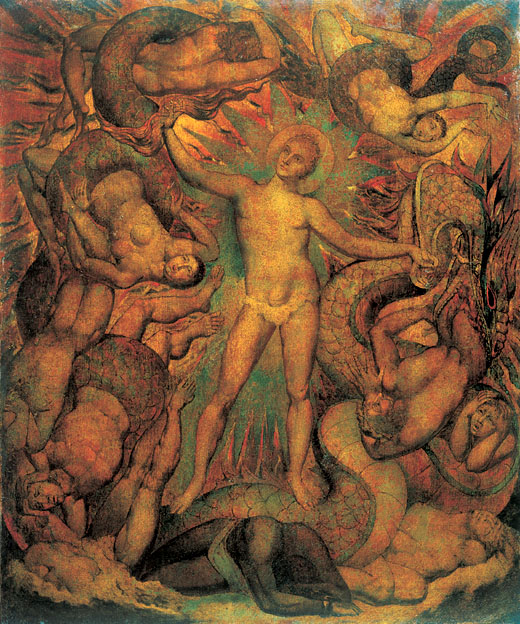
William Blake The Spiritual Form of Nelson Guiding Leviathan circa 1805-9 Tempera on canvas, 762 x 625 mm Purchased 1914 This is an allegory of the war with France. The great naval commander Nelson (1758-1805) is shown as a smooth-limbed, classical god, directing the Biblical monster Leviathan. Blake had a complex attitude to the war. Leviathan is a horrible, scaly creature; yet its master, Nelson, appears a heroic figure.-Tate
An anatomist by training and pathologist by instinct, Beddoes subjected death and madness to the most minute clinical investigation before giving them, as it were, a clean bill of health. It is said that he was constitionally unable to finish anything, but after several unsuccessful suicide attempts, the next to last cost him a leg, he was finally able to put an end to his life with curare. “I am food for what I am good for- worms,” begins his suicide note, in which he thoughtfully bequethed fifty bottles of Moet 1847 champagne to a cousin ” to drink my health in.” Even in this last ironic gesture there is a hint of that arcane sense of mummery that makes “Death’s Jest Book” such a lovely piece of absurd theatre.
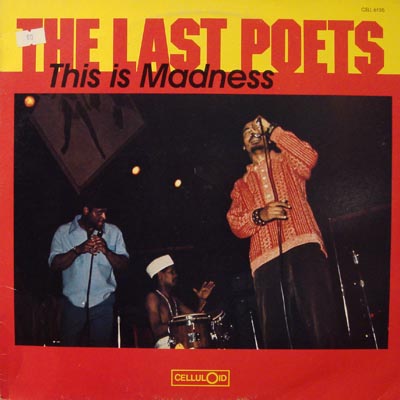
"The song This Is Madness opens with the following lyrics; All my dreams have been turned into psychedelic nightmares with Rosemary's Baby pissing in my face and Tiny Tim sticking his moldy penis into my bleeding mind and it cries for the strength to repel the sanctimonious sound of the white rock group the Grateful Dead"
The madman as a symbol is a living reproach to the skeptical, scientific view of man and the universe, which underlies everything that used to be known as Progress, and which, even in the 1800′s, was felt to be badly in need of reappraisal. The madman as metaphor is also the one who opens the trap door to that nether world where fiction and reality have quite a different relationship from the one we know from the daily newspapers. And it is here, far beneath the fantastic towers of man’s upper earth, that the artist may hope to reclaim his lost legacy of dreams, myths, and mystic flights of imagination.
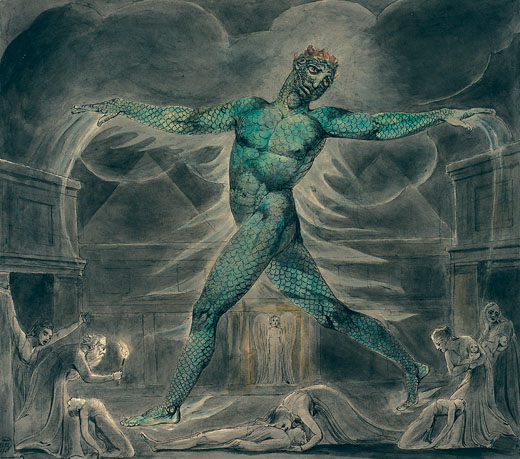
William Blake Pestilence: Death of The First Born circa 1805 Pen and watercolour over pencil on paper, 304 x 342 mm Lent by the Museum of Fine Arts, Boston: Gift by subscription This is a Biblical allegory derived from Exodus, Chapter 12. The gigantic figure of Pestilence strides over Egypt, spreading the contagion that will claim the lives of all the firstborn. To the left and right, his victims are in despair. Beneath his feet, a woman mourns her dead child. The angel standing in the doorway presumably embodies Moses’ promise of protection to the Jews who marked their doorframes with the blood of the lamb.-Tate
This is a search in which he has invested an almost Messianic longing. It has gone on uninterruptedly for two hundred years, in the work of Dostoevsky and Kafka and Joyce, Baudelaire and Robbe-Grillet and Nabokov. Still the madman remains with us as one of the great themes of art: indeed, all art is now mad, madder than ever, quite mad! if regarded from the standpoint of a “sane” observer, circa 1800. Yet the artist has no choice but to continue the search. He knows, of course, that dealing with madness is playing with Promethean fire. ” it it not otherwise possible,’ say Goethe. “Whoever stands thus at the edge of the abyss has to die or go mad; there is no mercy.”

"Naomi's insanity seemed to have somehow set Allen Ginsberg free as a child. The shy, bookish, emotionally intense boy from Paterson needed a lot of courage and conviction to follow the mad path he chose for himself, and his familiarity with true madness seems to have benefited him here. He knew the limits, and he could speak the language. Of course, there is no comparison between Naomi's incurable schizophrenia and Allen's 'madness,' which was at most a metaphor for true insanity. Still, there had been a moment of recognition when Allen looked at Naomi and saw himself, and this fact energized his poetic career. He had a 'psychotic episode' of his own as a young man, involving a vision of Blake, a famously mad visionary poet himself. Accounts of this episode (which frightened Allen's father) seem to make it clear that Allen was looking for the truths his mother had gotten lost within. All the Beats were aware of the metaphor of insanity; they tempted it through drugs, through poverty and suffering, and finally through writing. Despite the fact that real insanity is invariably tragic and debilitating, the notion of the disaffected mind has a romantic sense. There is an honesty and Zen simplicity to the demented mind; we see this charming simplicity in 'Kaddish' when Naomi tells of serving God a bowl of lentil soup."
“One might here be inclined to counter that In the moment before speaking anything can be said, but in point of fact, for the vast majority of us, what we actually do say is governed by a set of tacit rules that drastically limit our possibilities of speech. Indeed, this one reason why many are inclined to say that the genius, and even the madman is, much closer to God, than the cleric. What comes out of the mouth of the latter is totally routinized and predictable, whereas what emerges from the mouth of the genius madman is often totally surprising and new. Before speaking, the madman’s field is wide open. His or her speech lies outside the boundaries established by the ruling discourse, and for this reason his speech touches upon, what Lacan refers to as the “real,” that which has not (yet) been circumscribed and routinized by ordinary linguistic convention). The moment before the madman speaks provides us with an intimation of Ein-sof, the infinite possibility before God spoke and created the world.” ( Sanford L. Drob )

"If you believe the normal world is corrupt, insanity is a path to purity. It is difficult to imagine anyone actually wishing to be insane (unless this person has never met anyone truly insane). But the Beats yearned to uncover the truths that sanity masks. Ginsberg writes of the monster of the beginning womb, Burroughs of the naked lunch at the end of our fork, Kerouac of the wheel of the quivering meat conception. Birth and death, all the strange stuff in between ... we are all vulnerable together, the sane and the mad, and in the end we will all experience madness in at least some secret or small way."
“But I don’t blame any of us for blinding ourselves to the incredible intensity of our age. After all, we’re dealing with what Rudolf Otto called the Mysterium Tremendum – the deep unknown at the heart of the world that is so beyond our ken that we could not survive the knowledge. We cower from the face of God for good reason: that creative Source is a burning brightness of which fire is only a cool, pale imitation. History can be read as the story of one daring soul after another throwing itself into the flame, hoping to capture a spark. Our lineage is one of suicide missions, artists and scientists sacrificing themselves for the greater knowledge and experience of the collective. I believe that the danger of creativity never really went away – it just moved, leaving a sediment of the once-extraordinary behind as it rolled outward like cooling lava into the sea. We live on what was once the boiling coitus of elements – now the terra firma, solid and predictable terrain. Genius and Madness are neighbors because they move fast enough to stay ahead of everyone else, snapping up beachfront property as fast as it is made. (Madness just builds a slightly shoddier house, slightly closer to the tide.) And playing around on the edges is inherently dangerous. In any form, creativity challenges preconceptions, digests conventions, and throws us to burn and drown in the intensely unfamiliar. It changes who we are. “Being creative” is agreeing to an adventure from which nobody has ever, ever returned.” ( Michael Garfield )
Dostoevsky (If God is dead, “everything is permitted”) and Nietzsche (“. . . the advantage of our times, nothing is true, everything is permitted”) were both consistent in seeing the inevitable logic of relativism, but Dostoevsky was the more human. For Nietzsche to be consistent, he needed to become his own superman, but his views were overwhelming even for himself. As he poised over the abyss, he shivered with the horror of being “responsible for everything alive.” In the impossibility of this situation, madness perhaps becomes his only possible freedom from the overbearing responsibility. “Alas, grant me madness. . . . By being above the law I am the most outcast of outcasts.” All that was left was Nietzsche the exile, branded with the mark of Cain, with “the most painful, the most heartbreaking question, that of the heart which asks itself, where can I feel at home?”From the first step of facing this almost Faustian nihilism he saw no escape and allowed no escape. He scorned Hegel’s and Marx’s attempts to find some alternative purpose in history and Burckhardt’s answer that aesthetics could be the solution. As Erich Heller comments, “Nietzsche to the very end of his insanity spins out the thread of unbelief. In his very spiritual consistency there dwells the madness of desperation.” ( Os Guinness )
a


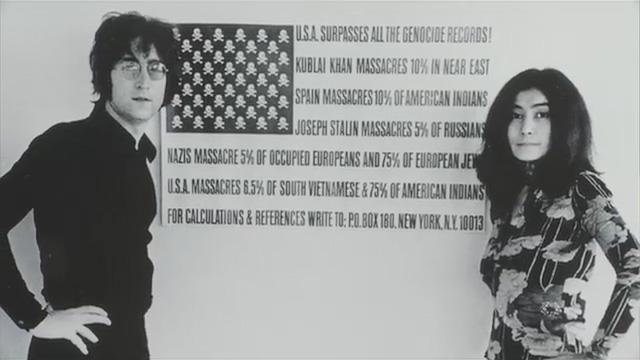





 COMMENTS
COMMENTS




Fantastic blog. Specially liked your potted biog of Beddoes. Interesting note though – have seen transcription of death note and it says ‘ to drink my death in’ – - excised out with word health inserted’ it was a common practise of doctors of that time to toast each others deaths in champagne – his cousin was also a doctor in Germany. The one thing that can be said to be true of Beddoes is that he couldn’t believe that all our complexity just led to animal death – it is hard to stomach yet woefully true. And as Christopher Ricks said – his finest critic, his form was a precursor to the Dramatic monologue perfected by Browning. Beddoes characters scream rhetorically at each other – there is little narrative no emotional interaction – just despair triumph and massive homour. Wonderful man. Thankyou.
Thanks so much for reading and adding your comments. This was a good article, bringing to light some forgotten and neglected writers. Best.